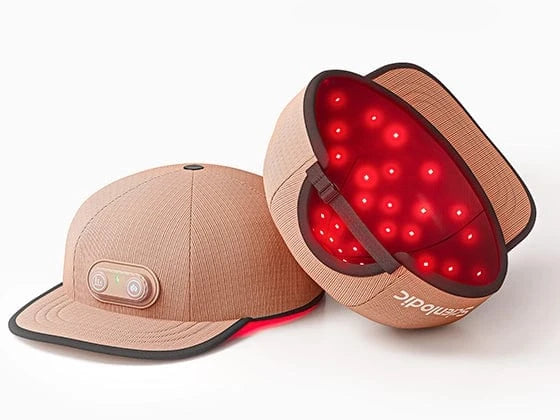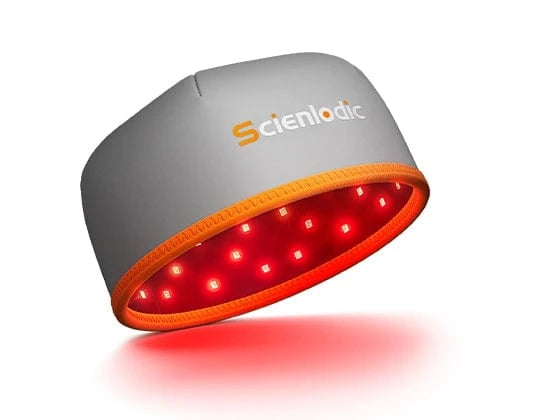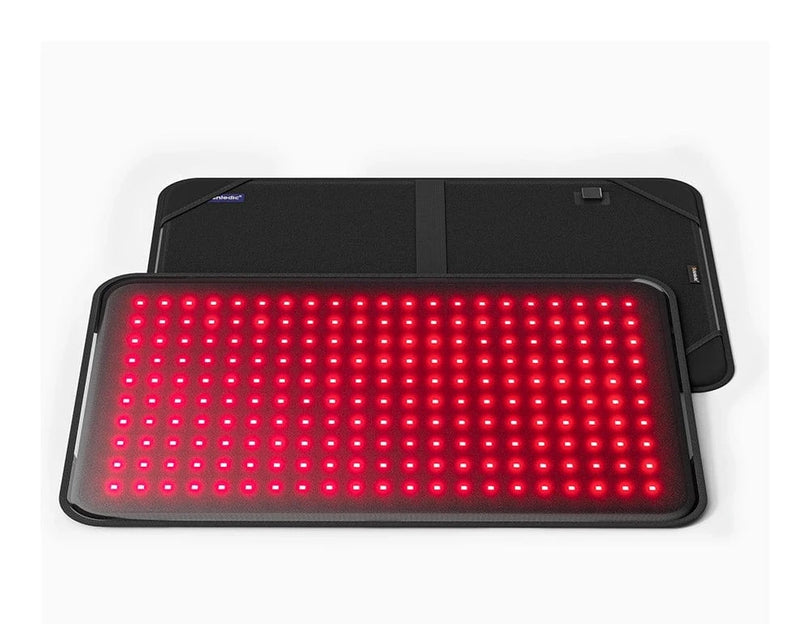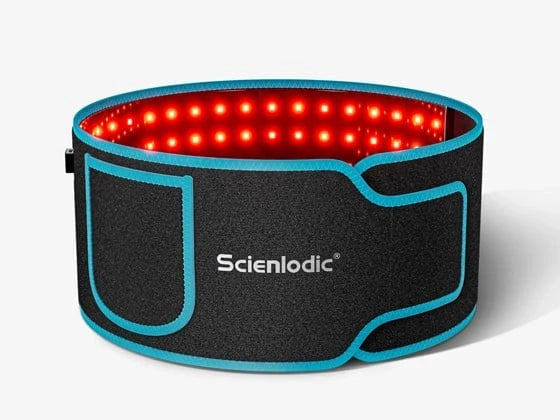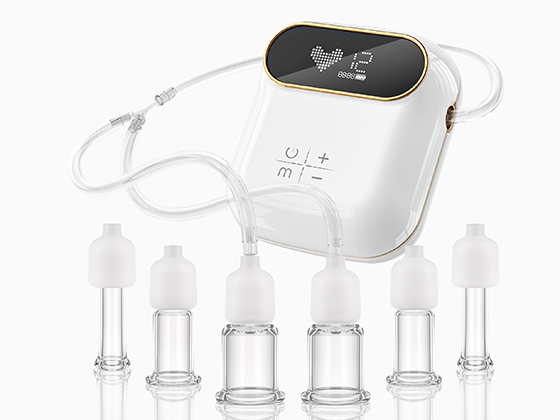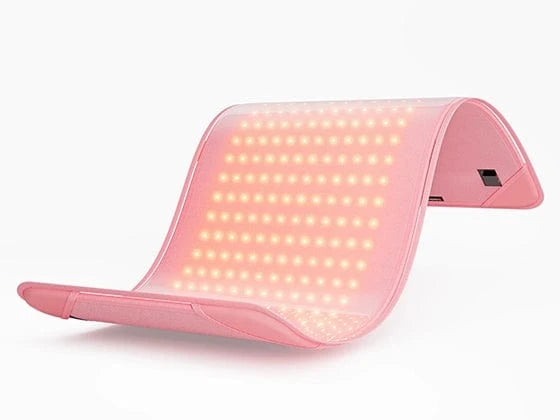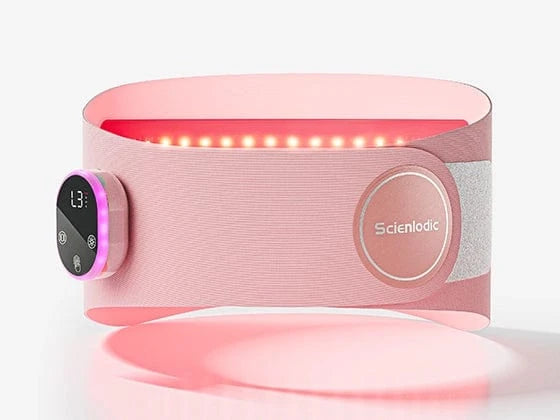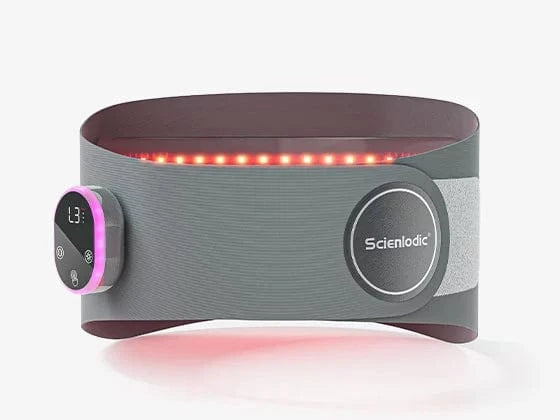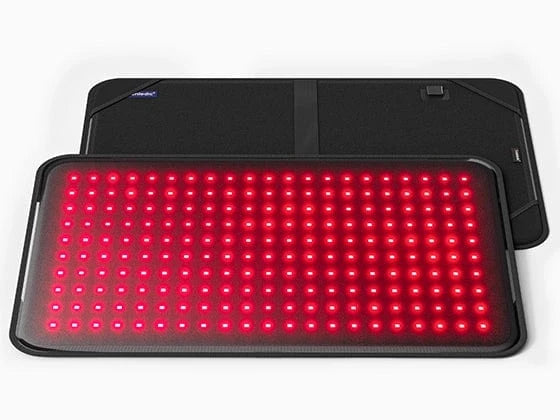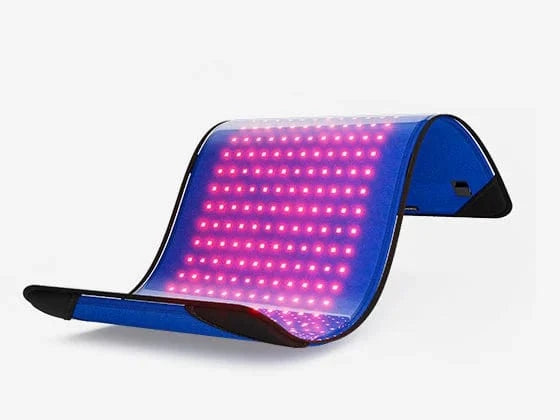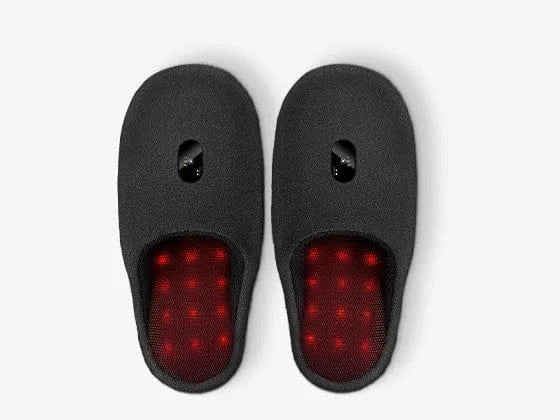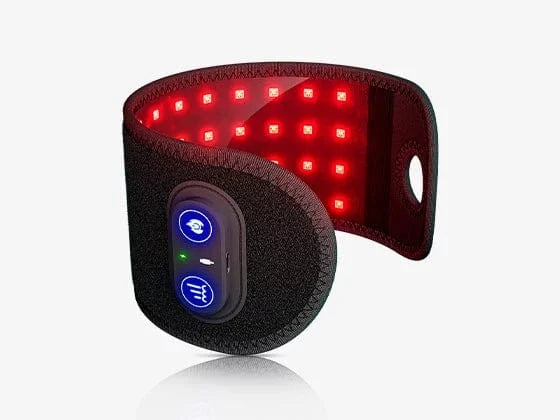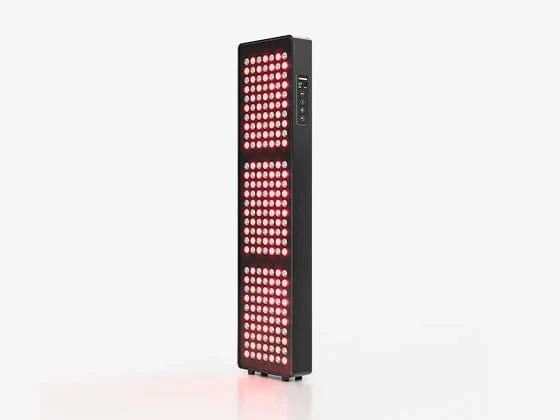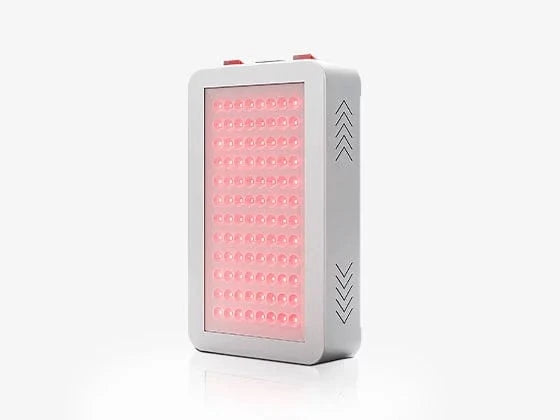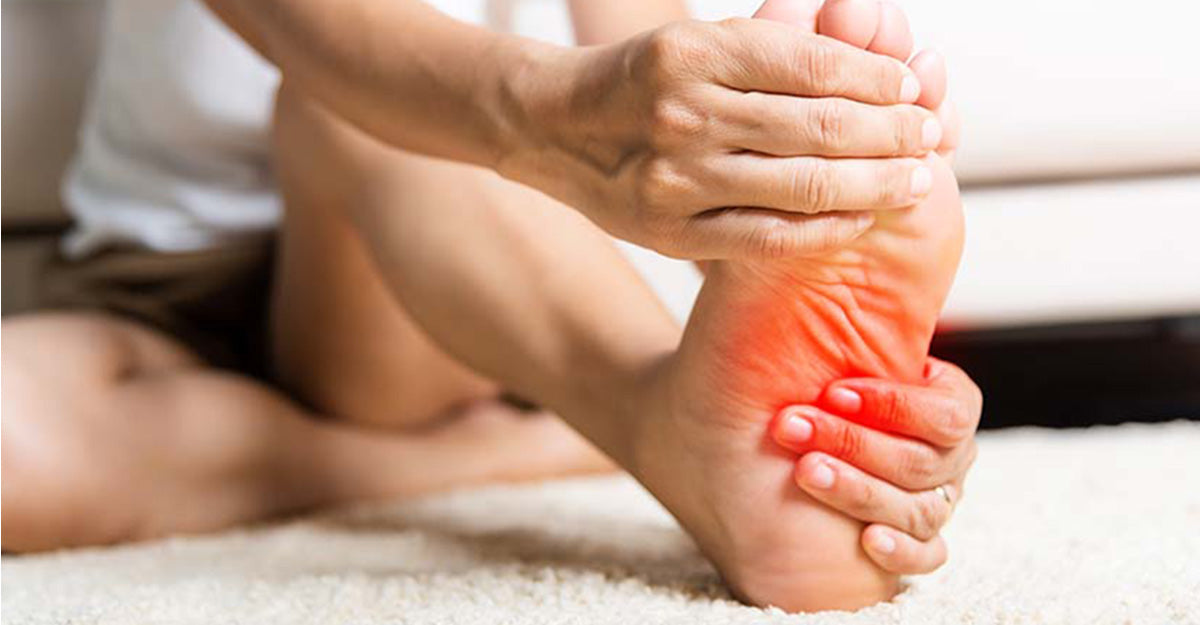Red light therapy, also known as LLLT, PBM, or near-infrared light therapy, is becoming increasingly popular. It has many benefits, including being painless, non-invasive, and providing various benefits to the human body.
However, there are still many brands that are taking advantage of the trend and attempting to push completely ineffective or unsafe products to the market.
We have even seen cases of a red light belt self-igniting on beds.

Therefore, it is necessary to do sufficient research before purchasing an at-home red light therapy device.
First, we will discuss size, device type, and budget, and quickly narrow down the selection range of options at this stage.
Then, we dig in and discuss how to evaluate safety, wavelength, and irradiance when selecting devices, in pursuit of the best treatment effect.
Lastly, let's talk about warranty. We don't want a product that falls apart after three weeks.
If you are already familiar with red light therapy and are looking for specific information, here is the table of contents:
Table of Contents
Before we begin, make sure you have subscribed to our newsletter for the latest information about at-home red light therapy.
Stay with me, it's going to be super interesting.
Narrow Down Your Options: Determining Device Type and Budget
Currently, common types of devices in the market can be roughly divided into wearable devices, handheld devices, and full-body panels. They target different needs and provide different kinds of health benefits.
Remember, the best device is not necessarily the most expensive, you will hear me repeat this over and over again.
First, let's discuss wearable devices.
Wearable Red Light Therapy
Generally speaking, wearable devices are not very large in size, ranging from small pads (12.0x6.0) to wraps/belts that can cover the entire abdomen and back.

Though, this year we have seen more brands starting to make at-home red light therapy mats, and the size of these should be considered.
For example, this mat has dimensions of 63 x 27.5 inches and is equipped with a total of 1408 LED beads. Although this height is still not enough for the average adult, it is already quite large.
So, where should you use wearable devices?
As you may have noticed, wearable devices provide more focused light compared to fixed devices (such as panels).
Therefore, wearable devices are suitable for treating diseases in "specific areas" and provide targeted benefits.
Meanwhile, due to the ability to almost zero distance close to the affected area that needs treatment, we do not need a very high power output of a device to provide the required dosage of red light for disease treatment.

All right, let’s talk about the price.
Generally speaking, the price of wearable devices varies from $50 to $500. Of course, there are also special cases, such as the red light therapy mat we mentioned earlier, which is priced at $1299, which is already the price of a small panel.
Another situation is the laser device. We see many brands applying laser treatment to the field of hair growth.

The good news is that these brands have been around for many years and have a certain reputation; the bad news is that they are very expensive.
Generally, to get a laser device, you need to pay a price of $600-1500. Although laser treatment is similar in definition to red light therapy, we won't go into detail about them in this article.
So, what is my conclusion?
If you are a beginner who has just learned about the benefits of at-home red light therapy and prefers targeted treatment, I strongly recommend trying a low-cost LED wearable device first.
You can allocate a budget of around $200-500 according to your needs and try to narrow down your options from there.
As of now, I can't think of any reason to recommend a huge red light therapy mat. If you need a larger-sized red light device, keep watching, as we will discuss the most classic red light device, body panels.
Full Body Panels and Beds

Panels are perhaps the most popular devices when people talk about at-home red light therapy.
Actually, I do often find myself wondering who'd be willing to spend thousands of dollars on one or a few panels when they first get in touch with at-home red light therapy.
Beginners should be wary, and include budget when making these decisions.
The advantages of panels are obvious. They are large and easy to use. All you need to do is turn on the switch, stand, or sit in front of the panel and enjoy 20 minutes of red light therapy.
There are also disadvantages, such as high initial investment costs.
Mainstream red light therapy panels on the market generally start at $600, and this entry-level device's height will be around 20 inches. As the budget continues to go up, you get larger and better panels.
After some initial research, you can see that if you want to buy panels for full-body treatment, you need a budget of at least $3000.
Therefore, if your health needs are relatively simple and focused, I recommend prioritizing wearable devices if you're getting started.
If you are an experienced user and can invest more money in purchasing devices, then the panel is a good advanced option.
Alternatively, you can use both (why not?) to get the most benefits.
As for red light therapy beds, generally speaking, the price is at least $5000 or more. In fact, red light beds are not commonly used for at-home red light therapy. You can find them in spas or rehabilitation centers.

If you are reading this article, you probably are not obsessed with red light therapy to the extent that to buy a professional device to use at home, right?
Home Sauna with Red Light Therapy
Infrared saunas have been popular for years.

According to the articles, infrared saunas can provide lots of health benefits, like detoxification, pain relief, skincare, and relaxation.
When we talk about red light therapy sauna (or infrared sauna), we usually think of a small wooden house built in a spa, with a lot of hot steam inside.
However, it is not practical to purchase such a device for home use.
Firstly, this would cost you a lot, similar to the red light therapy bed mentioned above. A wooden cabin can cost you thousands of dollars, or even more.
Secondly, the large size of the equipment makes installation and maintenance very difficult.
In fact, if you want to have an infrared sauna at home, it should be included in the design before renovation.
My conclusion is: unless you have a very deep pocket and want to transform your home into a professional spa, it's better to enjoy your infrared sauna at the facilities.
Handheld Red Light Therapy

Due to its portability, you could apply it to any part of your body. It’s like you using a mini version of a panel.
However, handheld devices are generally battery-powered, which raises concerns about battery life.
But let's be honest, no one can simultaneously achieve long battery life and high power output, it's impossible to have the best of both worlds, just like it can be difficult to lose weight while eating 20 hamburgers and drinking 10 bottles of cola a day.
Between battery life and power, most brands prioritize battery life. This is because frequent charging can be annoying, but the decrease in power output may not be easy to notice.
As a result, the therapeutic effect of handheld devices may be weakened. However, handheld devices might be convenient in certain specific cases, such as on trips, travel, or for quick facial treatments (5-10 minutes).
In these situations, the lightweight and compact of handheld devices become an utter advantage that other devices cannot achieve.
It really depends on your needs, so don't just look at panels.
Check out different types of devices and focus on their actual scenarios, which should help you make the decision.
Trusted by thousands of users, Scienlodic provides top-notch FDA-cleared at-home red light therapy devices. Discover now!

Not So Sure? Choose Devices By Your Need
You need to think about is, where you want to use it. On your stomach, thighs, or the whole body? Furthermore, do you want to relieve pain, make your hair healthier, or make your skin more elastic?
Knowing your goals in advance will deeply affect the selection of red light devices.
In the following, I will discuss several top health needs and provide device recommendations for each need. And in the next section, we delve deeper to figure out the cost and benefits of specific types of red light devices.
This should help you narrow down your options, meanwhile, let you know the features of devices in different forms, so you can pay less to gain more.
Red Light Therapy for Full Body
As mentioned above, in order to implement whole-body red light therapy, you will need to invest $1000 or even more.
To be honest, "full body" is not a symptom. When you search for this word, you may not have an urgent health problem that needs to be solved, such as pain that makes it difficult for you to fall asleep.

This is more like overall health, allowing us to gain overall benefits and prevent diseases from occurring in advance. Or to achieve a better energy state.
In that case, red light therapy panels or mats would be ideal for home use. However, it might be a good idea to try it out first at a nearby red light therapy provider before making any purchase decision.
Weight Loss at Home
Achieving weight loss can be a difficult process that involves controlled diets, engaging in rigorous exercise, and maintaining high levels of discipline.
Red light therapy has been shown to be a scientifically-based weight loss aid that can help make the process of achieving a healthier weight more manageable. The most important is you can do this at home.
If you just want to reduce your waistline, then a red light belt would be ideal. It’s easy to use, affordable and delivers real results.
If you are pursuing full-body, evenly distributed weight loss, then panels are what you are looking for.
Face or Skin Care
When it comes to skincare, light therapy masks or wands are always mentioned.

A light therapy mask can provide even light on your face while allowing you to continue your activities. Generally, the price of a regular mask is around $200, while top-brand devices may cost a bit more, around $300-600.
Not only red light, but blue, yellow, and green light have also been proven to be helpful for the skin. Therefore, you can pay attention to the types of light that these devices can provide.
Below the article, we will specifically discuss the most biologically active wavelengths of light (different wavelengths mean different colors). Stick to me.
Then, how about wands? Wands have the opposite pros and cons of masks.
On the one hand, Wand is generally compact and flexible, allowing you to use it to treat various parts of the body, such as the face, neck, hands, and so on.
The corresponding disadvantage is that you need to hold the device while using it, just like you need to hold a hair dryer to dry your hair.
If you only want to have red light facial care every day and don't plan to use it elsewhere, the wand may be a bit cumbersome.
After research, the price range of wands is wider.
Some mini devices, usually used close to the face, cost around $100. While red light therapy wands with a higher power, which can be used for pain relief, can cost up to several thousand dollars.
Generally speaking, products priced at a few hundred dollars are sufficient to meet the needs of most people.
Pain Relief
Basically, all types of red light devices can provide pain relief and have a fast effect (unlike hair growth devices, which usually take several months for you to observe significant before-and-after comparison).
If you have pain in a specific body part such as the wrist, elbow, or foot, please search "red light therapy" on Google, followed by the name of your specific area. Tons of devices are waiting for you to choose from.
If the area of your pain is rather large, such as back pain, please consider using red light devices that cover a border area, such as a red light therapy belt, pad, or even panels.
Handheld devices are suitable for use on several specific body parts. The compact nature also allows you to continue applying red light therapy while on business trips or traveling, not just at home.
If budget allows, owning both of the above devices can provide the best experience. For example, using a red light belt or panel at home, and using a red light wand when going out.
The relationship between them is a bit like that of a PC and a laptop, you cannot definitively say which one is better - it really depends on where you gonna use them.
Promoting Hair Growth
Wearable devices like red light therapy hats, caps, and helmets are definitely more suitable for hair growth.
Compared to wands or panels, a simple red light hat can satisfy the advantages of ease of use and affordability at the same time.
What is the biggest advantage? The light source of the wearable device is very close to the hair, providing the best treatment effect.
Reducing Cellulite
If you want to get rid of cellulite while getting your skin firm and elastic again, red light can indeed play a unique role.
Similar to weight loss red light therapy, a red light therapy belt/wrap can achieve the best therapeutic effect.
Considering that cellulite usually only appear around the waist and thighs, large devices such as panels and mats are not necessary.
Okay, after all that said, I believe that everyone should have a clear idea. You should be able to narrow down your selection to 3-5 devices. These devices should be of the same type and have a similar price range.
Still not sure what kind of product you need?
Fortunately, we are here to help. You can have a nice little chat with our health expert simply by clicking on the button at the bottom right. We can design a personalized treatment plan for you.
Now, let's talk about what could possibly be the most crucial issue-Safety
Safety Matters!
This is a serious topic.
Before discussing how many benefits you get, we need to confirm that your red light device wouldn't have any negative effects on you.
It's possible that many don't actually realize the potential downside of this.
I can say that in the red light therapy industry, there have been serious quality and safety incidents that you'll want to be aware of.
Due to conidentially, I cannot share details however it's important to take this seriously.
Minor issues such as not working after a few days, weeks, or months of use or having poor contact can happen.
In addition, panels might fall apart after prolonged use, due to poor assembling.
Yes, you heard me right, literally fall apart. You can still search for similar cases on YouTube.
What is even more serious, as I mentioned earlier, is that your red light device may catch fire on its own!
After learning more from at-home red light therapy manufacturers... One surprising fact is that 80% of devices you see have not installed thermal protection modules.
This means that if the device malfunctions, such as due to a short circuit, and overheats, it will not automatically shut down, potentially causing a fire.

So, when purchasing a red light device, especially a wearable one, make sure to ask whether the device has overheating protection. If the brand’s answer is vague, do not hesitate to look for other products.
Additionally, I strongly advise against using red light devices in bed or while sleeping.
Make sure you are completely awake within a 20-minute at-home red light therapy session.
Overdoing it would not result in exponentially increasing health benefits.
Okay, enough with the scary part.
What Factors Should Be Considered to Achieve The Best Health Results?
Go for Medical-Grade Devices
Before considering and purchasing any device, check if the page provides evidence or icons that show it is medical-grade.
You can trust FDA-cleared or FDA-approved devices too.

A red light device needs to meet various conditions in order to truly bring health benefits to the human body. This is also the biggest difference between a red light therapy device and a red light bulb, one is scientific-proven, and the other one is not.
If you are confused about things like wavelengths or irradiance mentioned below, simply filtering for medical-grade and FDA-cleared/approved devices is enough to exclude inferior products that cannot provide real results.
The Best Wavelength Combination
Those of you who clicked on this article know that light is beneficial to the human body.
But specifically, what types of light are beneficial to the human body?
Why do we need to spend hundreds, maybe thousands of dollars on light therapy devices, instead of lying under the sunlight?

Actually, to obtain most of the health benefits from light, all we need is light of specific wavelengths.
According to research, sunlight is generally considered to be full-spectrum light, including X-rays, ultraviolet radiation, visible light, infrared radiation, and radio waves.

Through extensive research, it has been confirmed that light, which has a wide range of health benefits, is mainly composed of red light in visible light and near-infrared light (NIR) that cannot be seen by the human eye.
More specifically, the most biologically active range is red light 600-700nm and NIR 780nm-950nm.
It should be noted that the wavelength range between 700nm and 780nm does not have therapeutic effects. Our bodies do not respond to light in this wavelength range.
At the same time, research has also shown that using a combination of wavelengths is more beneficial to the human body than a single wavelength.
From another perspective, if you have to buy different devices with different wavelengths separately and use them interchangeably every day, it can be quite troublesome to even think about.
So, choose a device that emits both red light and NIR light. Ensure that their wavelengths fall within 600-700nm and 780nm-950nm. That's it, you are good.
Simple, right? The next part is a bit trickier.
Does Irradiance Really Matter?
You might want to learn some basics about irradiance. This factor, along with wavelength, determines whether the actual treatment effect is good or bad.
One thing to know is, it is not necessary to choose the most powerful device.

This doesn't mean that power density and irradiance aren't important, but it's also not necessary to exceed your original budget for the "strongest device". There are good products at different prices.
With that said, let us quickly introduce a basic concept: irradiance.
Irradiance, measured in mW/cm2 or W/m2, reflects the ability of a red light device to output red light.
Generally, the higher the score, the better.
The irradiance you need varies according to different diseases, needs, and types of devices.
For example, the irradiance required to enhance blood circulation or to treat back pain is completely different. I cannot provide a unified reference number here.

But, I do wanna bring some tips for you, so you know what will work best for you.
Firstly, there will be huge gaps in the measured irradiance using different methods.
For example, there will be differences in the results obtained from testing with a solar meter, spectrometer, or the most rigorous integrating sphere system. And the professionalism of these three methods increases in order.

Therefore, when purchasing a red light device, you can first ask what method was used to measure irradiance by the brand.
If they don't even know what irradiance means, they cannot be trusted.
Additionally, as mentioned above, the actual energy you receive is strongly related to the distance.
Some brands recommend their irradiance at 3 inches while others measure at 6 inches. Be careful with it when you compare.
To be honest, if a brand really wants to falsify its irradiance data, you won't be able to detect it. Even if you buy a solar meter for testing purposes, the values you measure may not be accurate.
Therefore, it would be better to have cross-validation of irradiance data from multiple sources, such as brands and review media.
Not Everyone Needs Pulsing
Let's quickly go over the pulsing function.
Yes, research shows that pulsing can create a "resting interval" for cells during high-intensity phototherapy, improving treatment effectiveness.
Additionally, there are corresponding studies on the 10hz & 40hz pulses, which have been observed to have therapeutic effects on neurological and brain disorders.

There is also a neuro doc on YouTube that confirms the necessity of pulsing function.
However, not all red light devices have a pulse function. Compared to the factors above, the priority of pulse function is lower.
It should be noted that some manufacturers disguise flickering as a pulsing function to promote their products.
A proper pulsing function requires custom power and chips, which allows the device to accurately switch the light on and off, at a precise frequency.
My view on the pulsing function? It's good to have it, but not necessary.
However, if you're purchasing a red light device for treating neuropathy, then it's best to choose a product with pulsing and do more research on it.
Make Sure You Get Quick Responses From The Brand
I hope you already have 1-2 finalists and are about to announce the champion soon.
Relatively speaking, warranty is more important. Brands with good reputations and maintenance capabilities generally offer at least a 2-year warranty.
For large devices like red light therapy panels, make sure you get a timely and fast after-sales experience.
Trying to repair such a medical device yourself is not a good idea and make sure to consult an expert.
How to investigate warranty information?
When choosing devices, check if the product page has clear information about the warranty.
If you want to buy a more pricy device like a panel, I recommended you to communicate with their customer service to see how they behave and respond.
Additionally, check Trustpilot or other review platforms, including Amazon reviews.

You will find that some “top brands” might have great reputations on social media platforms, but receive tons of horrible feedback on review websites, which most users reporting poor customer service.
Therefore, it's important to check on multiple platforms.
Trusted by thousands of users, Scienlodic provides top-notch FDA-cleared red light therapy devices. Check all our devices here.

Buy with Free-Shipping
Shipping mainly affects your purchasing cost.
Since most at-home red light therapy brands are located in the United States, if you live in the United States, congratulations, you will generally receive faster delivery times, lower shipping costs, or free shipping.
Shipping costs will vary depending on the products purchased by each person and their location.
However, some brands might offer free global shipping during holidays such as Black Friday or Father's Day to help boost sales.
If you are looking to purchase a large device, or if you live in a remote area, you may want to wait and see before making a purchase decision.
Conclusion
Alright folks, in this article I talked about a lot of factors for choosing a good red light device, as well as some other considerations. This could be overwhelming if you are a complete starter.
Remember, the most expensive or most powerful is not necessarily the best, which is often used in brand marketing.
I always suggest trying at-home red light therapy at a more affordable price, maybe $2-300.
Once you get accustomed to and enjoy the benefits that red light brings to your body, it's time to focus on more professional devices, such as full-body panels.
But there's no need to rush into it all at once.
As red light therapy matures, I believe there will be more great and also affordable devices on the market.

